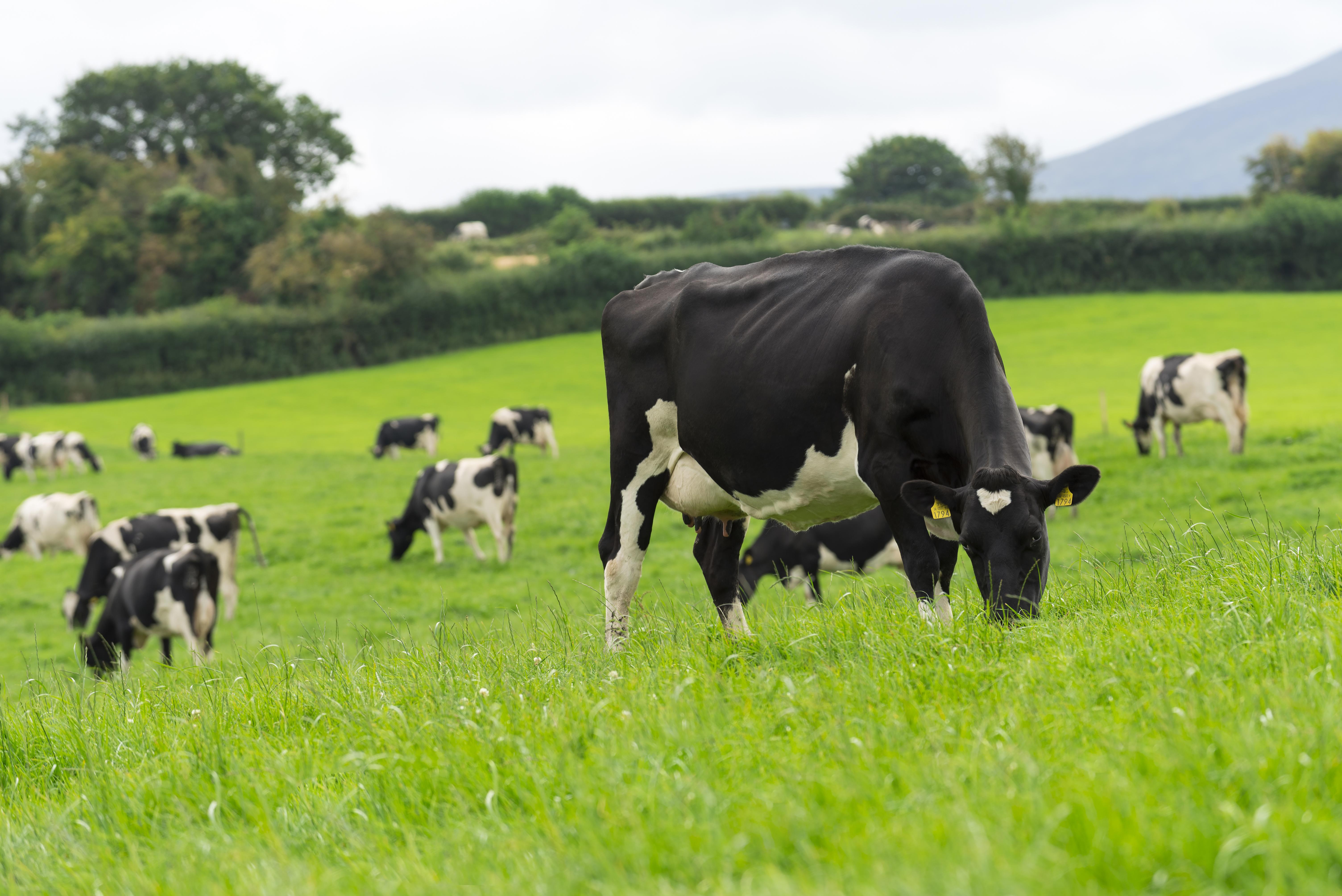Get a 24 hour weather forecast

Liam Stack, M.Agr.Sc, Ruminant Technical Manager
After taking out surplus grass as bales, it’s important to replace what we’ve taken out in terms of N, P + K to ensure we maintain good soil fertility and drive grass growth.
Fertiliser after removing excess grass as round bales:
Four to five bales an acre will remove around 40-50units of N/ac, 6-8 units of P/ac and 40-50 units of K/ac. It is imperative that we replace the P and K. This can be done with either chemical or organic fertiliser.
Potash (K) needs to be returned after bales!
The capability of grass to grow starts below the surface. If the major elements of P and K are compromised – less grass will be grown. The vast majority of soils are index 1 or 2 for K and are therefore deficient in Potassium (K). This is particularly true of silage ground. However, this is now becoming more common on the grazing area. This is due to 3 reasons:
There are no regulatory limits on the quantity or timing of K (Potassium) application. So, Irish soils should not be as deficient in K.
Every bale of silage made (200kg DM per bale) will remove 5-6kg of K/bale. Therefore, every 5 bales per acre made will also remove about 25-30 units of K/ac (half a bag of muriate of Potash (K) per acre). Some of this K should return in the form of slurry if possible.
acre). Some of this K should return in the form of slurry if possible.
Suggested product and rate:
| Product | Rate | Contains | |
| 4-5 bales/acre | Sweet 18s | 4/bags per acre | N,P,K,Sulphur,Sodium |
*before use ensure you have the N and P allowance remaining
Mid-season fertiliser requirements for grazing:
Grass uses 1 unit of N/day during mid-season growth. If your rotation is 21 days, apply 21 units/ac or 26kg/ha post-grazing.
Mid-season Fertiliser Plan (P and K gone out in Spring):
Mid-season Fertiliser Plan:
| Timing | Remaining P allowance | Product | Rate | N applied (u/ac) | Contains |
| July | No | SweetSustain | ¾ bags | 26 | N,Sulphur,Sodium |
| Or | |||||
| Sweetgrass | 1.25 bag | 29 | N,Sulphur,Sodium, Magnesium | ||
| Yes | Sweet 18s | 1.25 bag | 27 | N,P,K,Sulphur,Sodium | |
Increasing sward palatability will make grazing out easier
Poor graze out across the summer can result in the build-up and carryover of stem into
paddocks. Stemmy paddocks are not only of lower digestibility and energy (UFL) level but they also lead to lower grass intakes. Stemmy paddocks will result in lower levels of production, yield and protein percentage.
Sodium has been shown to increase the sugar content of grass, making it more palatable and easier to graze out.
Suggested Products:
Special offers are ongoing for summer fertilisers including the Sweet range, subject to availability.
Mid-Season Fertiliser Options:
Advantages to the Range:
Protected Urea products are c.10% cheaper by kg of N when compared to CAN. Teagasc research is shown that they grow the same levels of grass as CAN and Urea throughout the year while:
Green on the environment and green on your pocket.
2. Avail Phosphorus
Avail® Phosphorus is a water-soluble additive for granular phosphorus fertiliser that enables phosphate to remain free in the soil, allow for greater plant uptake.
3. Sulphur
Sulphur is an essential nutrient for grass growth and is closely associated with Nitrogen uptake and efficiency. Sulphur application has been shown to:
4. Sodium
Sodium increases the palatability of grazing grass – especially where slurry is being spread. Sweeter grass means tighter grazing and higher % grass utilisation
Contact your local Dairygold Branch, Area Sales Manager or Inside Sales on (022) 31644 for further technical advice or information regarding special offers.